
Guide to Alto Adige Wines
Alto Adige/Südtirol is a German-speaking Alpine region located in the north-eastern part of Italy, bordering Austria and Switzerland. Most of the territory is covered by mountains, with only 14% of land sitting below 1,000 metres above sea level.
Alto Adige/Südtirol produces high-quality white wines from Pinot Grigio, Gewürztraminer, Pinot Bianco, Chardonnay and Sauvignon Blanc. The most important red wines include Schiava, Pinot Noir and Lagrein. Though the region produces only 1.2% of Italy’s wine, most of it (98%) is high-quality and made to DOC standards.
Vines are planted along the river valleys, which join together to resemble the letter “Y”. Val Venosta valley is the north-west arm, Val Isarco valley is the north-east arm, and the wider valley around the river Adige provides the main branch to the south. The vineyards are planted on the valley floors as well as the mountain slopes, some sitting above 1,000 metres. Alto Adige/Südtirol boasts an incredible variety of grape-growing conditions, with varying meso-climates and various soils that include volcanic red porphyry, limestone and dolomite rock.
Note: for those visitors who specifically look to buy Alto Adige wines, here’s a link to our wine shop:
Table of contents
- Culture and people
- Location and geography
- Climate
- Key winemaking areas of Alto Adige and their wines
- Reading the label: what it can tell you about your wine
- Important Alto Adige wine sub-zones on the label
- Wine tourism in Alto Adige
- Neighbouring denominations in Alto Adige/Südtirol
- Supplement: Alto Adige DOC wine production statistics
- References:
Culture and people
While Alto Adige/Südtirol is part of the administrative province of Trentino-Alto Adige, it has one of the strongest national identities among all Italian regions. The reason is that, for the best part of its history (starting from 1140) Alto Adige/Südtirol was part of the historic region of Tyrol. Its northern half lies in Austria, while the southern half is in Italy. Südtirol only became part of Italy in 1919, when Austria-Hungary was split.
With such a long heritage, it’s no wonder that the region is dominated by the Tyrolean culture. 70% of its inhabitants speak German as their first language [2].

Because of the prevalence of the German language, you will find most place names and labels in Alto Adige/Südtirol written in Italian followed by a German translation. We tried to stick to the same rule in this article.
Citizens of Alto Adige/Südtirol have a very strong work ethic, and the region has a thriving economy as a result. The region’s wine industry has a workforce of about 5,000 wine growers. 98% of all wine produced in the region meets high-quality DOP standard. This is a much greater share than in the rest of Italy (46%[8]). Our dedicated guide has more information, if you’re interested in Italy’s wine production data.
Interesting fact: in the rest of Italy, the lion’s share of high-quality wine is produced by small estate wineries. Cooperatives are often associated with the lower-cost end of the spectrum. In Alto Adige/Südtirol, it’s different. Wine cooperatives in the region are known to produce very high-quality wines that regularly win some of the most prestigious wine awards.
Location and geography
Alto Adige/Südtirol is located in the north-east of Italy. It borders Austria to the north, Switzerland and Italy’s Lombardia to the East, Trentino to the south, and Veneto to the east.
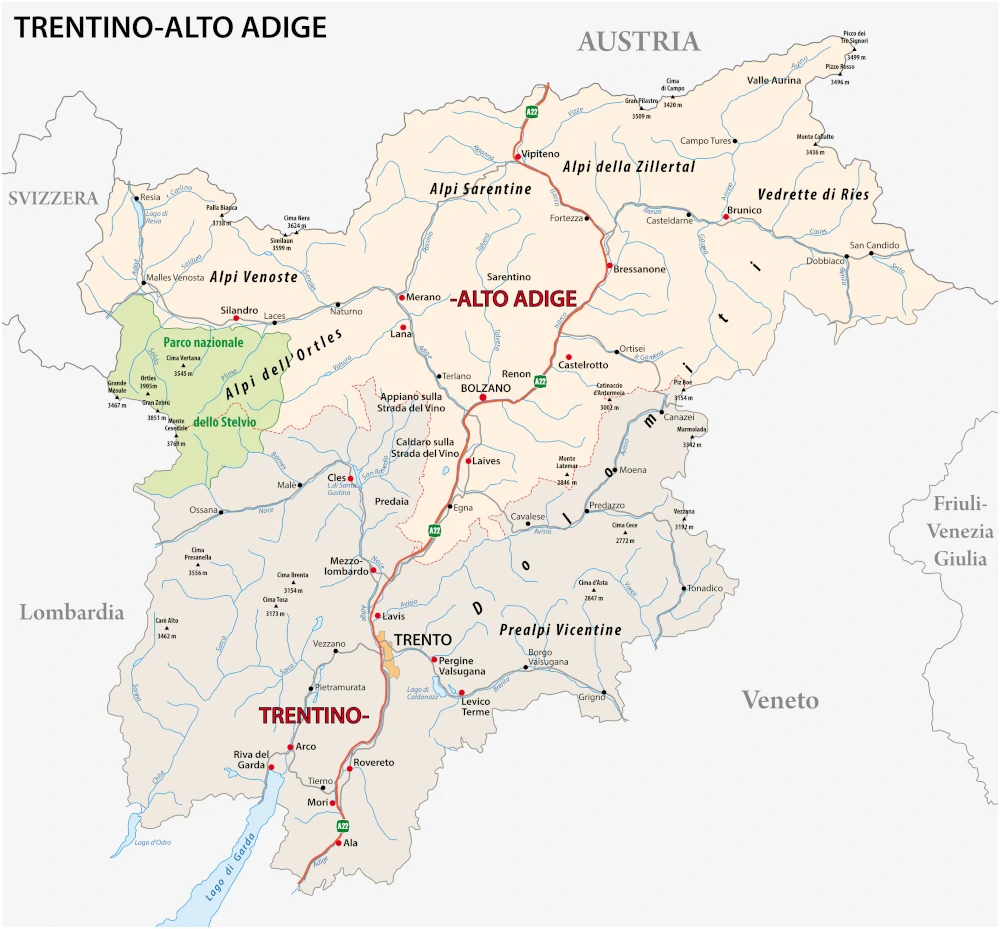
Most of the territory in Alto Adige/Südtirol is covered by the Alps, with only 14% of the land sitting below 1,000 metres above sea level. There are several hundred peaks exceeding 3,000 meters above sea level. The highest of them all is Mount Ortles, measuring 3,905 meters. It stands on the western border with Lombardia.
Most of the usable territory in Alto Adige/Südtirol belongs to the three river valleys, surrounded by the sheer wall of the Alps. The best way to imagine it is to think of a gigantic letter “Y”. The left (north-western) arm of the “Y” is created by the Adige/Etsch river. It starts from the Lago di Resia/Reschensee (pictured), and flows through the Venosta Valley/Vinschgau to Merano/Meran, then on to Bolzano/Bozen. Here, it turns south, and forms the foot of the “Y”. The first section of the foot is called Oltradige/Überetsch. Finally, the Adige/Etsch river forms the wide valley of Bassa Atesina/Unterland.

The right (north-eastern) arm of the “Y” is formed by the valley around the Isarco river: Valle Isarco/Eisacktal. This is where you’ll find the highest-altitude and northernmost vineyards in Italy. The Isarco river merges with the river Adige near Bolzano/Bozen.
The valley floors of Alto Adige/Südtirol are covered by a thick layer of sediment created by ancient rivers. Excavations in Trento, at the confluence of Adige/Etsch and Fersina, show that the depth of the sediment above the rocky bed reaches over 450 metres [1]. This explains why the soil in the valley floor vineyards is very fertile. While this permits larger harvests, producers aiming for high-quality practice strict yield control through green harvesting – picking unripe grapes to encourage vines to dedicate more resources to the berries left behind.
Climate
Despite its position in the middle of the Alps, the climate of most of Alto Adige is not Alpine. It has a warm semi-continental climate with hot summers, and dry, cold winters. The region benefits from 300 days of sunshine per year, which helps to ripen even some very challenging grapes.
The moderating influence from Lake Garda is a very important factor. The “Ora del Garda” is a fresh wind from the lake, which is 31 km south of the southern border of Alto Adige/Südtirol. In the hot summer months it brings cool air to the vineyards.
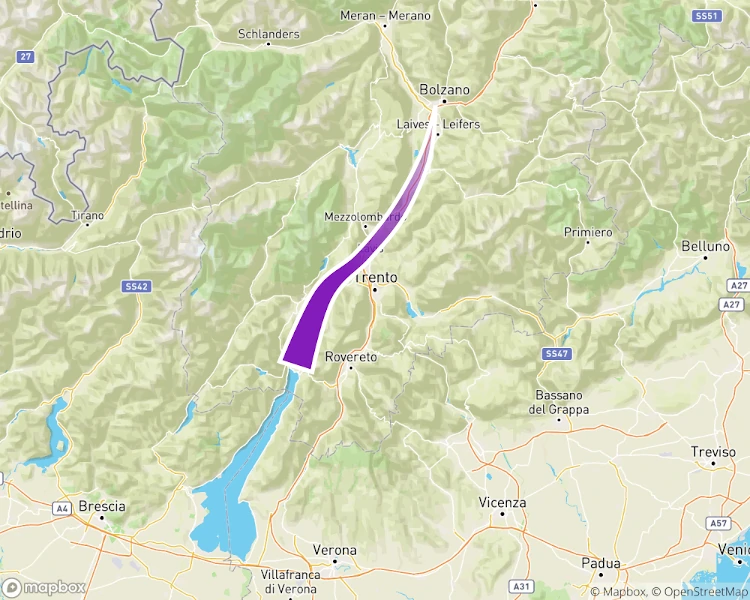
The region’s climate is rather dry, with most rainfall happening during summer. In Bolzano, the annual rainfall is only 700 mm [5]. But further up in the Alps, the amount of rain – and snowfall – can double to 1400 mm per year.
Average temperature in Bolzano/Bozen
| Month | Min (°C) | Max (°C) | Mean (°C) |
|---|---|---|---|
| January | -5 | 6 | 0,5 |
| February | -2 | 10 | 4 |
| March | 2 | 15 | 8,5 |
| April | 5 | 19 | 12 |
| May | 10 | 23 | 16,5 |
| June | 13 | 27 | 20 |
| July | 16 | 29 | 22,5 |
| August | 15 | 29 | 22 |
| September | 12 | 24 | 18 |
| October | 6 | 18 | 12 |
| November | 0 | 11 | 5,5 |
| December | -4 | 7 | 1,5 |
| Year | 5.7 | 18.2 | 11.95 |
From December to February, daily temperatures can drop below zero. But since precipitation is at its lowest level, snowfall is relatively light near Bolzano. But up in the mountains, in Venosta Valley/Vinschgau and Valle Isarco/Eisacktal, the temperatures are lower and snow cover is more prominent.

Spring nights are still cold, but the days can reach warm temperatures of 20–25 °C. Late spring brings a high risk of thunderstorms.
The summer months are known for their hot days, with an average temperature of 20°C and maximum temperatures reaching well over 30°C. Nights are still generally quite cool. Such high temperature swings enhance the aromatic complexity of the grapes, which is very beneficial for the quality of the finished wines.
Autumn is cool and less rainy than the summer. This allows winemakers to extend the ripening season for red grapes, such as Lagrein. As for the white grapes, Alto Adige/Südtirol is also known for its sweet late harvest and air-dried passito white wines.
Key winemaking areas of Alto Adige and their wines
The overall vineyard area in Alto Adige/Südtirol covers 5,500 hectares. 98% of the wines are produced according to the DOC regulations. White wines account for 62% of production, and red wines for 38% [2].
The key to understanding Alto Adige/Südtirol wines is the variability of climate and soil in its many distinct areas. Over many generations, growers have perfectly matched their grapes with the local climate, altitude and most beneficial types of soil.
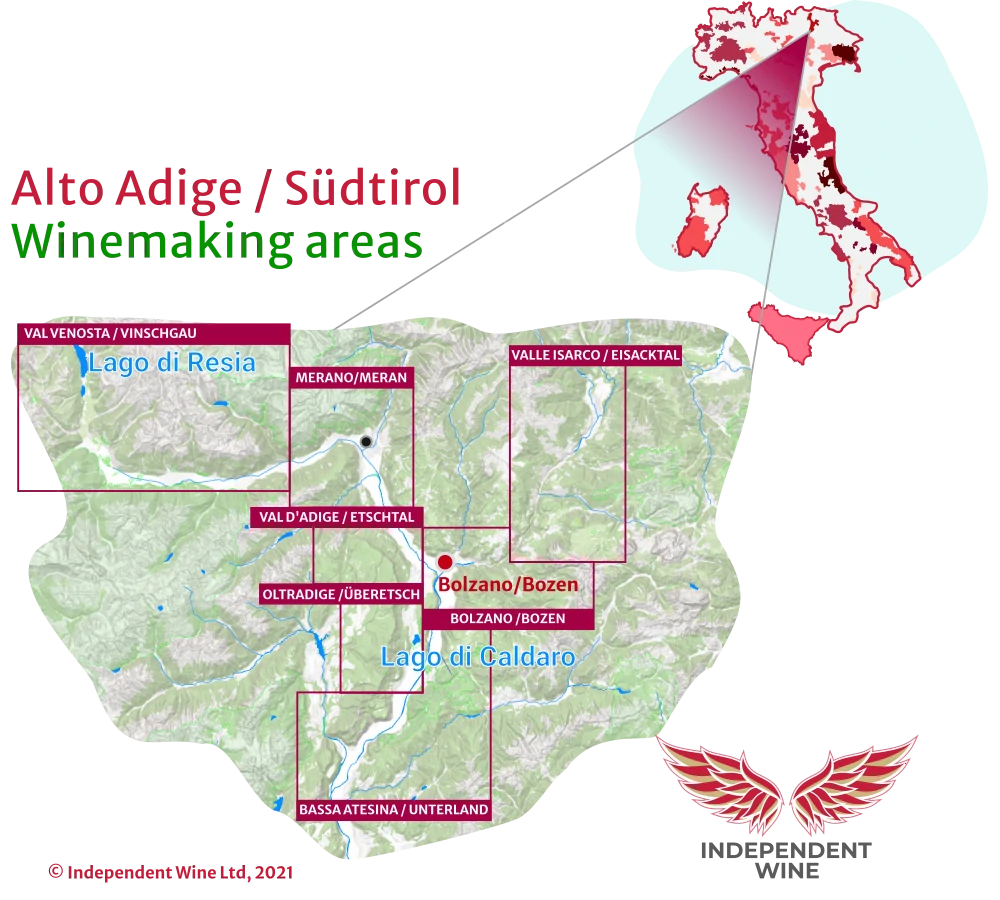
Bassa Atesina/Unterland
This area is in the south of Alto Adige, north of Trento. Here, the Adige river valley widens. Vineyards are planted both on the valley floor, and on the slopes of the surrounding mountains.

Viticulture on the valley floor
The soils are alluvial, rich in gravel and sand. They have been created over millions of years by the River Adige that periodically flooded the valley. These soils are more fertile, and rich in sands and gravels.
This area is an important producer of red grapes, including Lagrein and Schiava. Red grapes receive a lot of sunlight in the middle of the valley. Gewürztraminer, Müller-Thurgau, and Pinot Grigio are also widely planted here, and produce some high-quality wines. Notable wine towns include Cortina Sulla Strada del Vino (Cortina S.S.d.V.)/Kurtinig an der Weinstraße, Magré/Margreid and Egna/Neumarkt.
Strada del Vino/Weinstraße and mountain viticulture
Bassa Atesina/Unterland is where the famous wine road – Strada del Vino/Weinstraße – begins. It runs through villages and small towns built on the slopes of the Alps on the western side of the valley. Vineyards are planted on the mountain slopes and hilltop sites (pictured). The most notable wine towns along Strada del Vino include Cortina/Kurtinig, Cortaccia/Kurtatsch and Termeno/Tramin.
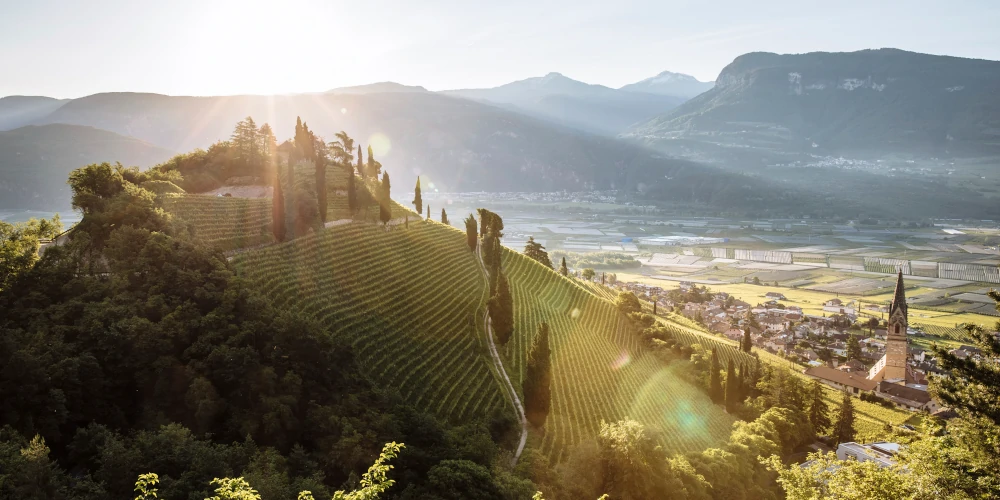
Viticulture on Unterland’s mountain slopes: soil in the mountain vineyards is rich in limestone and dolomite rocks. Limestone is a sedimentary rock that consists mostly of calcium carbonate. In contrast, dolomite rocks have a much higher magnesium content. Over millions of years, magnesium-rich water transforms calcium carbonate into calcium magnesium carbonate, and limestone into dolomite rocks [7].
The limestone-based soils of Unterland are known to produce rich and age-worthy Pinot Noir wines, with rich flavours of dried wild strawberry and raspberry. Cantina Kurtatsch (based in Cortaccia/Kurtatsch) has plantings of Pinot Noir at an altitude of 350-450 metres (Mazon vineyard), 450-650 metres (Glen vineyard). Peter Zemmer (based in Cortina/Kurtinig) produces Pinot Noir Riserva wine from grapes grown in the Vigna Kofl vineyard, at an altitude of 1,030 metres.
Some white grapes thrive on the mountain slopes as well, especially on sandy soils rich in dolomite rock. These include Sauvignon (planting at 450-600 metres), Pinot Bianco (500-650 metres), and Pinot Grigio (450-700 metres). Müller-Thurgau produces refreshing white wines with high acidity, and prefers the coolest sites at 800-900 metres.
Oltradige/Überetsch
This zone is located to the north of Bassa Atesina. It lies on the right side of the Adige/Etsch river.

This region’s gem is Lago di Caldaro/Kalterer See – a beautiful lake surrounded by the mountains (pictured). The lake’s shores and the land surrounding the town of Appiano/Eppan are an important production area for Schiava wines.
Bolzano/Bozen
This zone is located around Bolzano/Bozen, the capital city of Alto Adige/Südtirol. This area is particularly famous for Lagrein and Schiava.

The most historic Lagrein vineyards are planted within the city bounds near the Muri-Gries abbey. This grape, traditional to Südtirol, traces its history to the 11th century. The Lagrein wine from this zone is so important that it’s included in the Alto Adige wine law: it be called either Lagrein di Gries (in Italian), or “Grieser Lagrein” or “Lagrein aus Gries” (in German). Learn more about Lagrein.
More vineyards for Lagrein and Schiava are planted on the hills behind the city.
Conca di Bolzano is one of the hottest areas in Alto Adige/Südtirol during the summer months. The sunlight reflects from the Alps surrounding the area and heats the land in the centre of the valley. This helps to ripen Lagrein, which is a late-ripening and sun-loving grape.
Volcanic soil: The main soil type here is volcanic porphyry with pockets of clay and sand. 280-270 million years ago (Lower Permian Age), the mountain region of Alto Adige/Südtirol was a hub of volcanic activity. This massive period of eruptions created deposits of red porphyry – a pink-red rock with embedded crystals. Porphyry forms when molten lava erupts from volcanoes and quickly solidifies on the surface.[6] It has become famous in Italy and across Europe as a construction material.
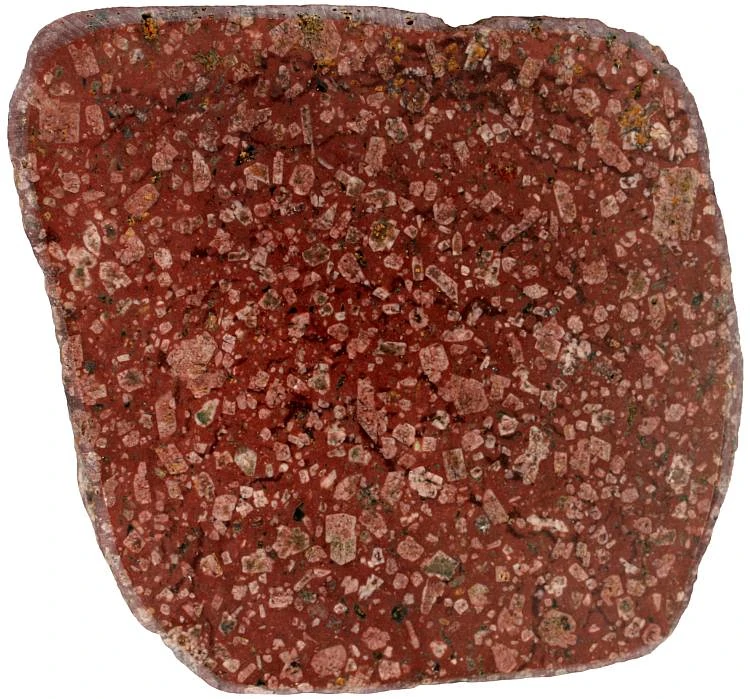
Val d’Adige/Etschtal
This zone covers the area between the city of Bolzano/Bozen and the cultural hub of Merano/Meran. Like in the neighbouring Bolzano/Bozen, the soil here is rich in volcanic porphyry. The small 5x5km area between the towns of Terlano/Terlan, Andriano/Andrian, and Nalles/Nals is famous for its fresh and aromatic Sauvignon Blanc wine. It is considered the best Sauvignon in Alto Adige, if not the whole of Italy.
Another grape that thrives here is Pinot Bianco.
Merano/Meran
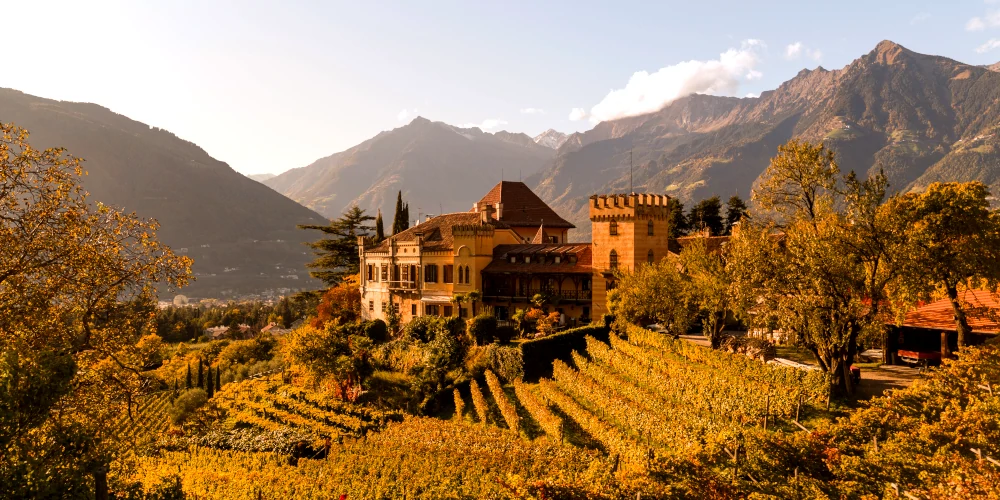
The winemaking district of Merano/Meran surrounds the town of the same name. Famous around the world as an Alpine resort, it offers luxurious spa holidays in the summer and downhill skiing in the winter. The town hosts the annual Merano WineFesival, the Merano Music Festival and is home to a museum of wine.
In addition to all of that, Merano/Meran is also an important producer of some of the best wines made from Schiava, which sell under its own designation: Südtirol Meraner (see a further section of this Guide dedicated to understanding Alto Adige/Südtirol wine labels).
In Merano/Meran, like in the neighbouring Bolzano/Bozen, soils are rich in red porphyry.
Valle Isarco/Eisacktal
Valle Isarco/Eisacktal lies to the north-east of Bolzano/Bozen. The valley surrounds the Isarco/Eisack River that flows from Bressanone/Brixnen to Bolzano/Bozen, where it joins the Adige/Etsch river.
Valle Isarco/Eisacktal is home to the northernmost vineyards of Italy, also planted on the highest altitude slopes. The growing conditions are very cool here.

The preferred grapes are white, which are easiest to ripen in such a climate. The region’s main grapes are Silvaner/Sylvaner, Riesling, Müller-Thurgau and Kerner. Wines from Valle Isarco are known for their characteristic “steely” flavour.
The soils here are rocky, dominated by slate and schist with inclusions of quartz and mica.
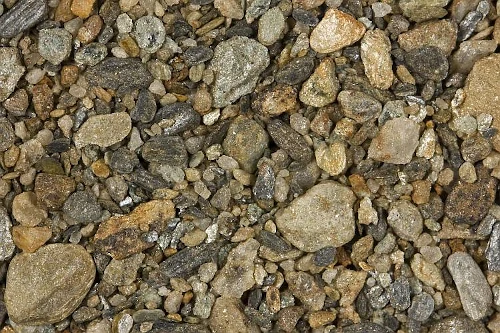
Val Venosta/Vinschgau
The area of Val Venosta/Vinschgau is located in the north-western part of Alto Adige/Südtirol. This is where the river Adige/Etsch starts its journey towards Bolzano/Bozen.
The climate in the valley is cool and dry. To increase the chance of ripening, vineyards are planted on the lower and central part of the valley.
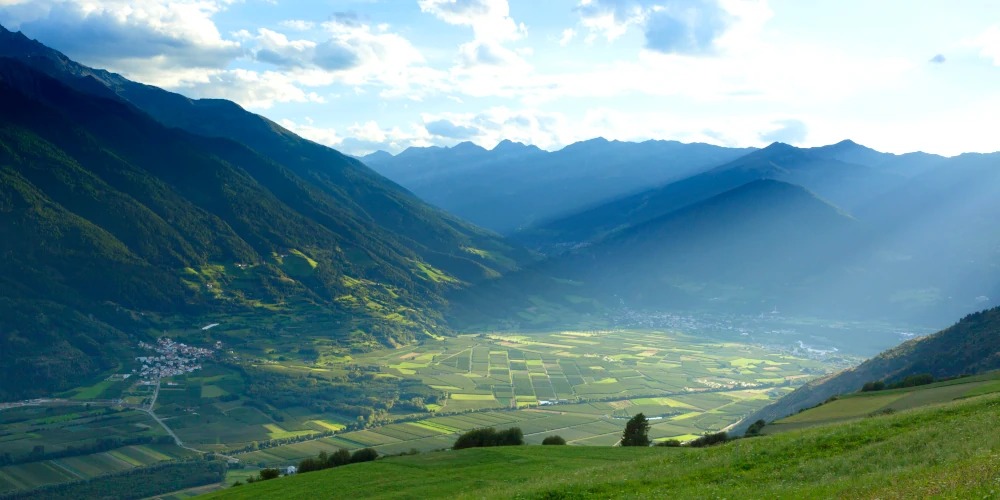
The soils in Val Venosta/Vinschgau are sandy, with a high content of schist rocks. Similar to the other northern zone of Valle Isarco, wines of Val Venosta are also known for their high acidity and dry, “steely” flavour. This area is known for high-quality wines made from the Pinot Bianco, Müller-Thurgau and Riesling grapes.
The soils in Val Venosta/Vinschgau are sandy, with a high content of schist rocks. Similar to the other northern zone of Valle Isarco, wines of Val Venosta are also known for their high acidity and dry, “steely” flavour. This area is known for high-quality wines made from the Pinot Bianco, Müller-Thurgau and Riesling grapes.
Reading the label: what it can tell you about your wine
Most Alto Adige DOC wines list the German title first, followed by the Italian one: “Südtirol/Alto Adige/Denominazione di Origine Controllata”. They can also legally be labelled as “dell’Alto Adige”, “Südtirol” or “Südtiroler”.
All wines produced under Alto Adige DOC regulations must show the grape variety on the label, with two exceptions.
- Alto Adige Bianco/Südtirol Weiss, which is a blend of Chardonnay, Pinot Bianco and Pinot Grigio
- Metodo Classico sparkling wines
In all other cases, the grape variety must always be mentioned, for example: “Südtirol/Alto Adige DOC Gewürztraminer” or “Südtirol/Alto Adige DOC Lagrein”.
The wine must contain no less than 85% of the grape displayed on the label (for example, Alto Adige DOC Pinot Grigio will be at least 85% Pinot Grigio). The remaining 15% can be made up of other grapes permitted in the DOC.
Typical wine names and blends
There are some slightly unusual naming conventions that it’s worth being aware of. “Sauvignon” means “Sauvignon Blanc”, and “Traminer Aromatico” is the Italian for Gewürztraminer. When you see “Cabernet” it means the wine is made either of Cabernet Sauvignon or Cabernet Franc, but could be a blend of both.
Alto Adige/Südtirol permits several white and red blends. Such white blends include:
- Chardonnay – Pinot Bianco
- Chardonnay – Pinot Grigio
- Pinot Bianco – Pinot Grigio
Permitted red blends include:
- Cabernet – Lagrein (Cabernet Sauvignon, Cabernet Franc, Lagrein)
- Cabernet – Merlot (Cabernet Sauvignon, Cabernet Franc, Merlot)
- Lagrein – Merlot
Wines can be labelled “Riserva” after two years of ageing: either bottle or barrel-ageing is permitted. It should be noted that the Riserva style is not permitted for Schiava and Müller-Thurgau wines.
Lagrein wine that comes from around the Muri-Gries monastery in Bolzano/Bozan can be called either “Lagrein di Gries” (in Italian), “Grieser Lagrein” or “Lagrein aus Gries” (in German).
Important Alto Adige wine sub-zones on the label
Now, with the label out of the way, let’s look at the most important sub-zones in Alto Adige/Südtirol. Due to historic or natural reasons, each sub-zone (sottozona in Italian) is thought to produce some of the finest wines from a particular grape. Because of that, the sub-zone’s name will be included on the label next to the word Südtirol/Alto Adige.

Terlano/Terlaner
Located just a few miles west of Bolzano, around the town of Terlano/Terlan. This sottozona is famous for its aromatic, fresh and fruity Sauvignon Blanc. Look out for Südtirol Terlaner Sauvignon DOC on the label.
Another area which may feature on the label is Terlano Classico/Terlaner Klassisch. This refers to grapes grown in a small area measuring 5 km across, set between the towns of Terlano/Terlan, Nalles/Nals, and Andriano/Andrian.
Pinot Bianco (Südtirol Terlaner Weissburgunder DOC ) from Terlano/Terlan is also worth noticing.
This sottozona permits quite a few other white grapes, such as Chardonnay, Müller-Thurgau, Pinot Grigio, Riesling, Riesling Italico/Welschreisling and Sylvaner/Silvaner. So if a particular grape is not mentioned on the label next to Terlano/Terlaner, it means that the wine is a white blend. This can be very fine wine too, made from 50% Pinot Bianco and/or Chardonnay/ The rest of the blend will be made up of either Riesling Italico, Riesling, Sauvignon Blanc, Sylvaner, Müller-Thurgau, and/or Pinot Grigio.
Terlano/Terlaner Riserva must be aged for two years.
On the label: Südtirol Terlaner Sauvignon DOC
Valle Iscaro/Eisacktal or Eisacktaler
This sottozona stretches over the Isarco Valley/Eisacktal, and it is Italy’s northernmost appellation. Because of the challenging ripening conditions, it’s mostly dedicated to white varieties: Sylvaner/Silvaner, Kerner, Müller-Thurgau, Grüner Veltliner, Riesling, Gewürztraminer, and Pinot Grigio. Those grapes must contribute no less than 85% to any wine they’re labelled as. Vendemmia tardiva (late harvest) and passito wines are permitted under DOC regulations. Riserva must be aged for two years.
The only permitted red is Klausner Laitacher (name on the label: Alto Adige Valle Isarco Klausner Laitacher) – a blend of Schiava, Portoghese/Portugieser, Lagrein and Pinot Nero, in any proportion. This blend can come from the villages of Barbiano, Chiusa, Velturno and Villandro.
Producers from Bressanone/Brixner are allowed to add Bressanone/Brixner after Valle Iscaro/Eisacktaler on the label.
On the label: Alto Adige Valle Isarco Bressanone.
Valle Venosta/Vinschgau
The Valle Venosta/Vinschgau sottozona stretches over the whole of the winegrowing district of Valle Venosta/Vinschgau. Wines from this cool area are steely and high in acidity. The most important grapes are white and include Kerner, Chardonnay, Müller-Thurgau, Pinot Bianco, Pinot Grigio, Riesling, Gewütztraminer and Sauvignon Blanc. As for reds, only Pinot Nero and Schiava are permitted.
Late harvest (Vendemmia tardiva) and passito wines are permitted. Riserva wines are allowed too, and they must be aged for at least two years.
Santa Maddalena/St. Magdalener
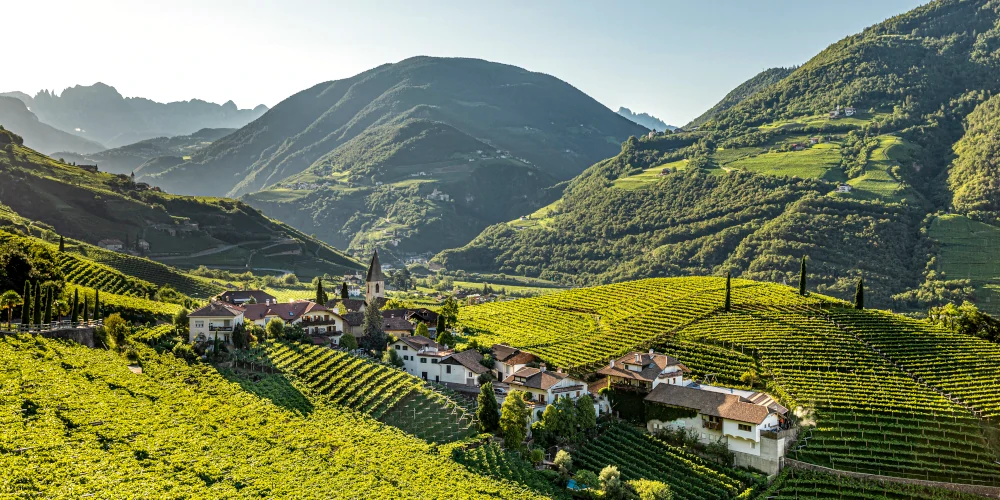
This sottozona is famous for wines made from Schiava. Located on the slopes to the north of Bolzano, Santa Maddalena is known for probably the best Schiava wines of Alto Adige/Südtirol. Thanks to the hotter climate of Bolzano, Alto Adige Santa Maddalena Schiava is known to be fuller-bodied and more flavoursome than Schiava from other parts of the denomination.
The Schiava wine from Santa Maddalena must consist of at least 85% Schiava. As elsewhere in Alto Adige, Riserva is not permitted for the Schiava grape. There’s an even smaller historic area in the sub-zone, which can call its wine Classico/Klassisch.
Important: because of the high prestige of Sanra Maddalena, the grape is not shown on the label. Consumers are supposed to know that this name stands for top-class Schiava. The same rule applies to Colli di Bolzano and Merano, as explained below.
On the label: Südtirol St. Magdalener Klassisch
Colli di Bolzano/Bozner Leiten
The sub-zone of Colli di Bolzano/Bozner Leiten stretches over the hills surrounding the city of Bolzano/Bozen. The only grape permitted here is Schiava. The growing conditions are similar to Santa Maddalena – thanks to the warmer climate, the grapes ripen well and produce more concentrated wines.
And, like in Santa Maddalena and Merano, the grape is not shown on the label.
On the label: Alto Adige Colli di Bolzano Classico
Meranese di Collina (or Meranese)/Meraner Hügel, or Meraner
Merano is a beautiful Alpine town and renowned spa resort west of Bolzano. The hills around Merano are home to some of the best Schiava wines. That’s why they belong to the sottozona of Meranese/Meraner. As in case of Santa Maddalena or Colli di Bolzano, the only permitted grape is Schiava, which isn’t shown on the label.
On the label: Südtirol Meraner.
Wine tourism in Alto Adige

Backed by the white peaks of the Alps and studded with quaint villages, vineyards and tasting rooms, Alto Adige is a fantastic place for a holiday. If you’re planning a trip, our guide to visiting Alto Adige is packed with tips on which wineries to visit and where to stay. We’ve also got some advice on where to taste the best wines while you’re there.
Neighbouring denominations in Alto Adige/Südtirol
If you’re interested in Alto Adige/Südtirol, you probably want to know about other denominations in the region. The following are much smaller than Alto Adige/Südtirol DOC, but we wanted to give you some pointers in case you stumble upon them in the future.
The Lago di Caldaro/Kalterersee/Kalterer DOC denomination is shared between Alto Adige and Trentino. The lion’s share of the DOC’s territory lies within Alto Adige, near Lake Caldaro/Kalterer See in the Oltradige/Überetschzone.
Lago di Caldaro DOC produces about 2 million bottles of Schiava wine each year [8]. This is about 50% of the total Schiava produced in Alto Adige DOC [2].
The Valdadige/Etschtaler DOC shares its territory between Veneto, Alto Adige/Südtirol and Trentino. It produces wines from Chardonnay, Pinot Grigio, Pinot Bianco and Schiava. [3]
Supplement: Alto Adige DOC wine production statistics
| Grape Variety | Vineyard area, hectares | Wine production, 75 cl bottles |
|---|---|---|
| Pinot Grigio | 662.57 | 5,910,941 |
| Vernatsch / Schiava | 635.46 | 5,548,532 |
| Gewürztraminer | 604.79 | 3,998,431 |
| Weißburgunder / Pinot Blanc | 573.61 | 4,457,877 |
| Chardonnay | 569.8 | 4,381,273 |
| Blauburgunder / Pinot Noir / Pinot Nero | 494.17 | 2,908,316 |
| Lagrein | 486.66 | 3,588,628 |
| Sauvignon | 442.95 | 3,031,464 |
| Müller Thurgau | 198.69 | 1,626,120 |
| Merlot | 190.12 | 1,386,885 |
| Cabernet (Franc/Sauvignon) | 159.47 | 923,327 |
| Kerner | 111.21 | 800,736 |
| Goldmuskateller / Moscato Giallo | 94.97 | 877,649 |
| Riesling | 91.38 | 585,356 |
| Sylvaner | 69.34 | 515,311 |
| Zweigelt | 27 | 66,981 |
| Veltliner | 26.73 | 218,613 |
| Solaris | 14.6 | 24,877 |
| Bronner | 14.26 | 48,288 |
| Rosenmuskateller / Moscato Rosa | 7.95 | 21,977 |
| Others | 77.77 | 1,855,083 |
| Total | 5,553.44 | 42,776,667 |


References:
[1] Geologia dei Vini Italiani
[2] Consorzio Südtirol Wein / Vini Alto Adige
[3] Italian Wine Scholar Manual
[4] Disciplinare di Produzione dei vini a denominazione di origine controlata “Alto Adige” o “Dell’Alto Adige” (in lingua tedesca “Südtirol” o “Südtiroler”), Modificato con DM 18.09.2014, MiPAAF
[5] https://www.climatestotravel.com/climate/italy/bolzano
[6] https://en.climate-data.org/europe/italy/trentino-alto-adige-suedtirol/merano-13593/
[7] https://www.sandatlas.org/porphyry/
[8] ISMEA


